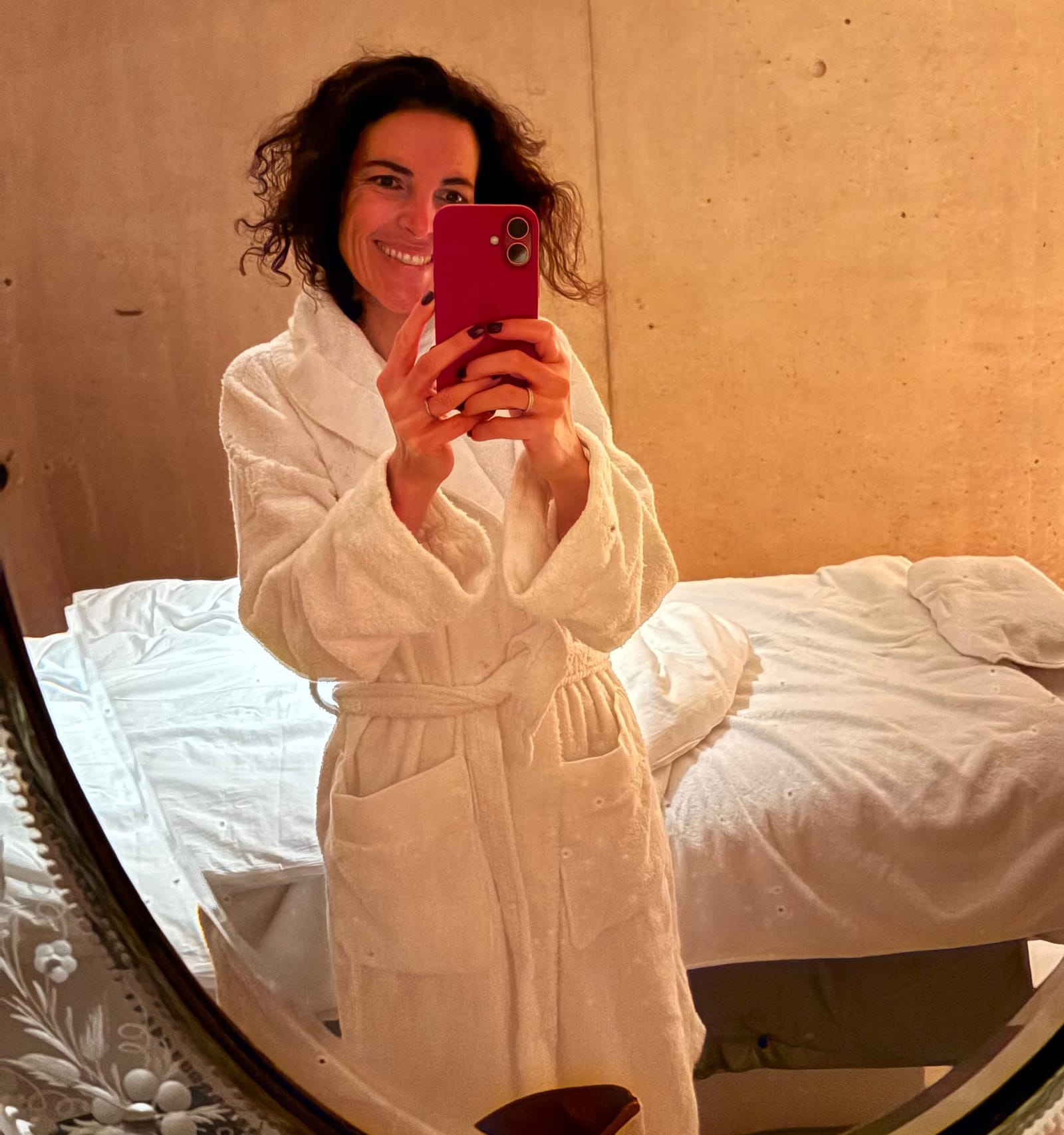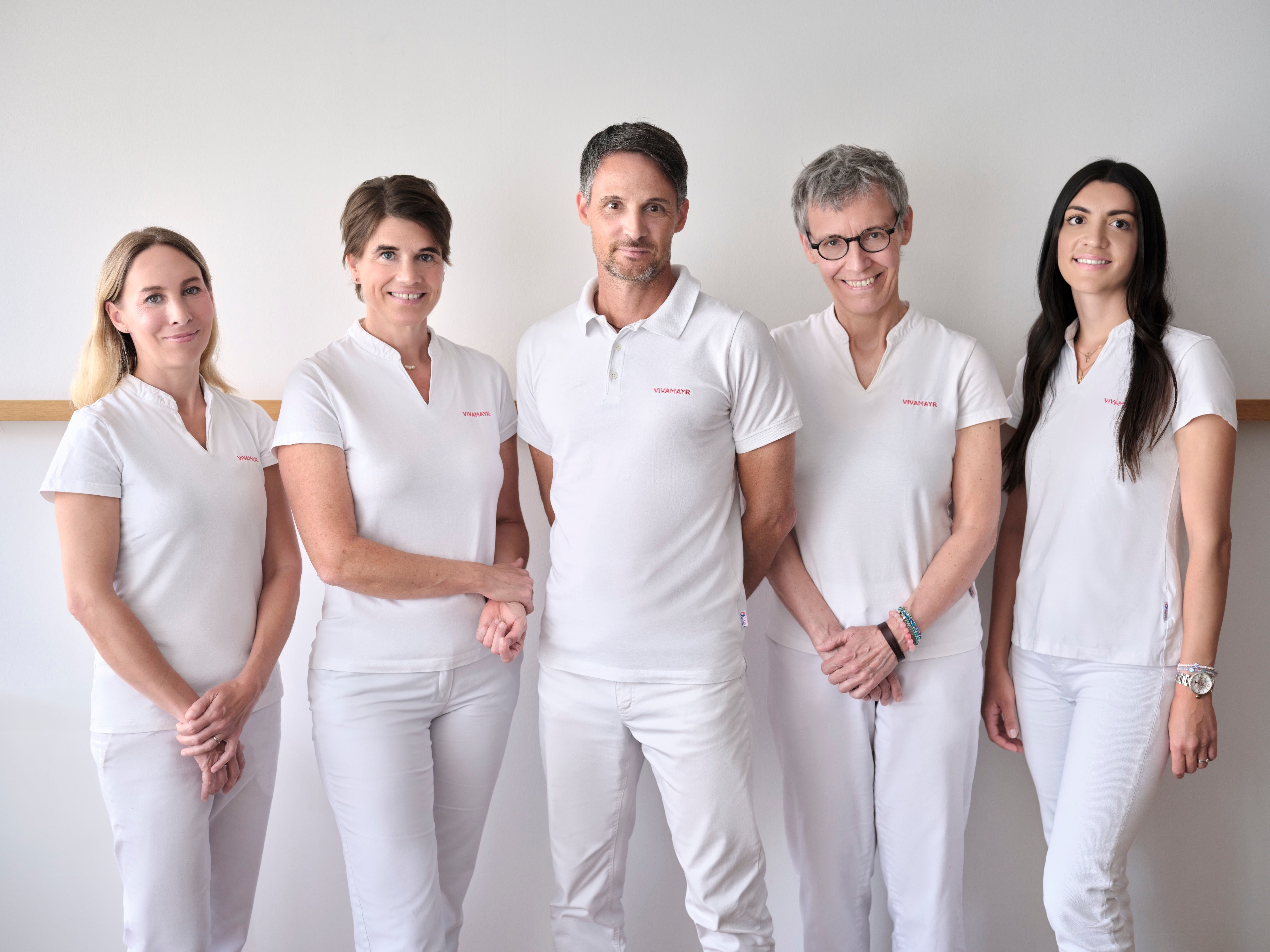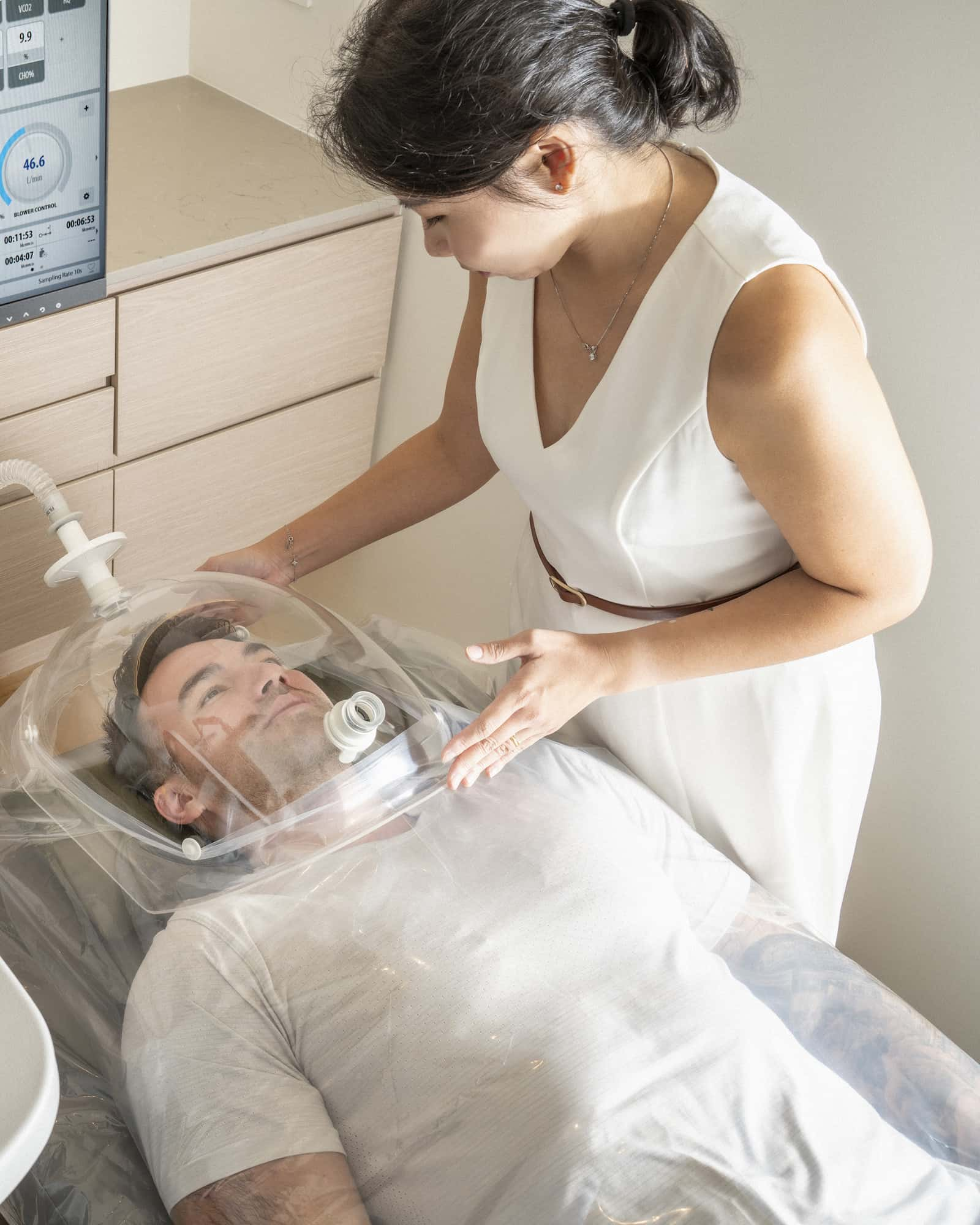There's a puzzling trend emerging in corporate leadership. CEOs are investing five or six figures annually in their personal longevity, optimizing everything from their biomarkers to their sleep architecture, from their metabolic health to their cognitive performance. They understand intuitively that extending their prime years means extending their impact. Yet these same leaders rarely extend this investment to their executive teams, despite the fact that the return on investment would be even more compelling.
At Serenity Ways, we work with CEOs who've embraced longevity optimization for themselves. They're tracking their VO2 max, monitoring their continuous glucose levels, and scheduling yearly comprehensive diagnostics at Chenot, ZOĪ or YEARS. They recognize that peak cognitive performance isn't luck: it's a system built over time, with compounding effects. But when we ask about their C-suite's health strategy, the answer is typically the same: annual checkups, standard corporate health insurance, and reactive care when problems arise.
This gap isn't just ironic. It's expensive. And the math doesn't add up.
The CEO's Personal Longevity Revolution
We're witnessing an unprecedented shift in how leaders think about their health. And it’s not just the Bryan Johnson's of this world, it’s not just the Jeff Bezos and Mark Zuckerberg’s who all invest in longevity science: most high-performing CEOs are now treating their bodies like the mission-critical assets they are.
What are they buying? Comprehensive diagnostic panels that go far beyond standard bloodwork. Preventive protocols tailored to their genetic profiles. Cognitive optimization strategies. Metabolic health monitoring. Sleep architecture analysis. The works.
And they're right to do so. Executive longevity isn't just about living longer, it's backed by peer-reviewed science centered on sustaining cognitive sharpness, the very foundation of leadership effectiveness. Research shows that sleep duration between six and eight hours is associated with the highest cognitive performance and larger grey matter volume in key brain regions. Sleep restriction, conversely, negatively affects executive function, memory, and sustained attention: precisely the capacities that separate exceptional leaders from average ones.
These CEOs understand a fundamental truth: their decisions compound. Every strategic choice they make ripples through their organization. If optimizing their health gives them even a 10% edge in decision quality, the return is exponential. Extended prime years mean extended impact, sharper judgment, and sustained competitive advantage.
So why stop at the CEO?
The Hidden Cost of Executive Health Neglect
While CEOs optimize their longevity, their executive teams typically operate on standard corporate healthcare: reactive, episodic, and minimalist. Annual physical exams - if they're lucky and if they feel concerned on a personal level. Sick days when something breaks down. No preventive strategy, no optimization protocol, no performance monitoring.
The costs are staggering, though often invisible.
Lost productivity from health issues costs companies 2.3 times more than medical and pharmacy bills combined. When employees are sick, they show 16% less productivity, and that's just for frontline workers. For executives making decisions that affect thousands of employees and millions in revenue, the multiplier is far greater.
Consider the cognitive impact. Sleep deprivation, which is endemic among overworked executives and those who face frequent jet lag, induces adverse changes in cognitive performance affecting memory, attention, alertness, judgment, and decision-making. Even more concerning, self-regulation and self-monitoring suffer significantly greater declines after sleep deprivation. These are the exact capacities executives need most: the ability to regulate their responses, monitor their thinking, and make sound judgments under pressure.
When your CFO is operating on five hours of sleep, making crucial capital allocation decisions with compromised cognitive function, what's the real cost? When your COO's undiagnosed metabolic dysfunction is affecting their energy and decision-making stamina, how many opportunities slip through the cracks?
The problem multiplies across the leadership team. Unlike individual contributors whose impact is largely additive, executive decisions are multiplicative. A suboptimal strategic choice by a C-suite member doesn't just affect their department—it cascades through the entire organization.
The Compelling ROI Case for Executive Health Programs
Here's where the math gets interesting. If you think investing in CEO longevity makes financial sense, the case for investing in your entire executive team is even stronger.
The Direct Financial Returns
Employee wellness programs generate an impressive 5 to 6:1 return on investment on average. For every dollar invested, companies see five to six dollars in benefits. But that's for general employee populations. For executives, the returns are exponentially higher because of the leverage their decisions carry. Some health concierges we partner with have measured a 25% increase in deals signed and deal value for top sales execs in banking, after introducing executive health support for them and their close family, compared to those on normal reactive health plans.
Executive wellness programs specifically deliver a 56% drop in sick days, saving thousands in lost productivity per executive annually. But the real value isn't in sick days avoided, it's in the cognitive performance gained.
Consider a typical C-suite of eight executives with average compensation of $500,000 each. That's $4 million in annual compensation. Now factor in the actual impact of their decisions:
- Your CFO makes capital allocation decisions affecting tens of millions in resources
- Your Chief Revenue Officer shapes strategy impacting hundreds of millions in revenue
- Your COO oversees operational efficiency across the entire organization
- Your Chief Product Officer determines your competitive positioning and innovation pipeline
If a comprehensive preventive health and longevity program costs $20,000 per executive annually, you're investing $160,000 for your C-suite of eight. Now consider the returns:
Productivity Gains: Even a conservative 10% improvement in cognitive performance (better decision-making, sustained attention, sharper strategic thinking) on $4 million in compensation equals $400,000 in value. That's a 2.5x return before we factor in the quality of decisions made.
Risk Mitigation: What's the cost of losing a key executive unexpectedly? Recruitment costs, onboarding time, lost institutional knowledge, and strategic disruption easily exceed $500,000 per executive. Executive health programs can identify potential health risks early, reducing the risk of unexpected health events affecting critical team members.
Retention Value: Top executive talent is increasingly considering comprehensive health benefits as a key factor in career decisions. The cost of executive turnover—both direct and in terms of organizational disruption, far exceeds preventive health investment.
According to a Deloitte study, companies with high health and wellness scores appreciated by 235%, compared with the overall S&P 500 Index appreciation of 159%. Organizations that prioritize executive health aren't just reducing costs. They're creating fundamental competitive advantage.
The Strategic Multiplier
But these numbers, compelling as they are, still undersell the real value. Executive health optimization isn't just about individuals. It's anlso about team dynamics and organizational capacity.
When your entire leadership team operates at peak cognitive function, you get:
- Better strategic alignment: Leaders with optimized health have the cognitive bandwidth for nuanced thinking and collaborative problem-solving
- Faster, higher-quality decisions: Executive teams that aren't struggling with brain fog, sleep deprivation, or chronic stress make sharper calls
- Improved succession planning: You're not just investing in today's performance, you're extending the prime years of your leadership bench
- Cultural transformation: When leadership visibly prioritizes health as performance strategy, it cascades through the organization
Why the Gap Exists: The Psychological Barriers
If the ROI is so compelling, why aren't more organizations investing in executive health and longevity? The barriers are primarily psychological, not financial.
The Personal vs. Organizational Spending Paradox
CEOs comfortable spending $100,000 on their personal longevity optimization balk at spending $160,000 on their entire executive team. Why? Personal spending feels like investing in yourself. And as of today, most of these CEOs still pay for their longevity investments themselves. Fortunately, this is progressively evolving, starting with the US and UK, in financial services and PE-backed companies in particular, where the nudge towards preventive health, longevity and performance optimization comes from the board room itself.
From that perspective, organizational spending still feels like overhead. It's the same cognitive bias that makes people buy expensive cars but hesitate to invest in employee development. But the case is here to change.
The "Perk" vs. "Performance Tool" Misclassification
Executive health programs are often categorized as luxury perks rather than performance infrastructure. In part, because today’s best longevity experiences are happening in luxury clinics, high-end retreats and exclusive setups - in fact, the only ones who have a business model which can offer the agenda flexibility and unparalleled discretion needed by top executives with busy schedules.
And yet, imagine if companies thought about laptops or CRM systems this way. "Should we really spend money on computers for our executives? Seems excessive."
The reframing needs to be explicit: executive health optimization is performance infrastructure, not a benefit. It's the hardware upgrade for your most expensive and impactful human capital.
The Isolation Problem
Most executive health programs, when they exist, treat leaders as isolated individuals. An executive gets a comprehensive physical, receives a report, maybe gets some recommendations, and then... nothing changes. There's no accountability structure, no peer support, no shared journey.
This isolation is precisely why so many executive health initiatives fail. Behavior change, especially around health and longevity, is extraordinarily difficult to sustain alone. High-performing executives are accustomed to operating in competitive, collaborative environments. Strip away the group dynamics, and even the most disciplined leaders struggle to maintain new health protocols amidst competing priorities.
Measurement Challenges
Unlike quarterly revenue numbers or operational KPIs, the impact of health optimization seems to be harder to measure in traditional business terms at first. How do you quantify "sharper strategic thinking" or "sustained cognitive performance"? The benefits are real but often qualitative in ways that make budget approvals difficult.
However, we have seen first-hand how easy it can be to implement A/B tests with certain executive groups, in particular in sales roles, and evaluate over a period of 3 to 6 months how much can be gained from deploying executive health and performance programs. The results were astonishing, and usually sufficiently convincing to extrapolate the performance increase expectations to other executive groups where the measurements could be indeed harder to account for (for example, HT, strategy or IT executives).
The "Essential vs. Expendable" Mindset
There's an unstated hierarchy: the CEO is irreplaceable, but executives are, theoretically, replaceable. This is delusional: great executive talent is extraordinarily rare and valuable, but the psychology persists. CEOs justify personal health investment because they see themselves as the single point of failure. They haven't extended that same logic to their leadership team.
Breaking the Pattern: What's Working
Here's the good news: some organizations have cracked the code on executive health optimization, and their success offers a blueprint for others.
Success Story: Group Approaches
Wellfounded.health and a few others have successfully built executive health programs by leveraging something powerful: group dynamics. Having organized leadership retreats for years, they've created an environment where executive teams optimize their health together, not in isolation.
The key insight? When executives undergo health transformation as a cohort, it normalizes the practice and creates peer accountability. The group dynamic removes the "special treatment" stigma and taps into high performers' natural tendency to benchmark against their peers. Pre-existing trust among the group members makes vulnerability possible. Some even share health metrics, discuss challenges, and of course celebrate wins.
This isn't just feel-good team building: in fact, most of these times, it’s quite a hard experience, which challenges the executives’s physical and mental endurance. It's recognizing that sustained behavior change requires social infrastructure, especially for time-pressed executives who will deprioritize their health without accountability structures.
Recommended approach: Executive Cohorts
The Ranch Malibu has a long track record of optimizing the performance of groups, not just individuals. Their approach to wellness and longevity is based on group dynamics, and outdoor exercise. Naturally, The Ranch experience can be privatized, which then allows to measure the impact on groups of executives within a given company.
The model of The Ranch demonstrates why cohort-based transformation outperforms solo optimization, from the leadership longevity perspective: shared experience, competitive cooperation, and built-in accountability.
When executives go through intensive health and performance optimization together, they create a support network that extends beyond the program. They become each other's accountability partners, sharing strategies and maintaining momentum in ways that isolated individuals rarely achieve.
The power of this approach lies in normalizing health investment as leadership strategy. When it's a group initiative rather than an individual indulgence, it becomes part of the team's competitive advantage.
Why These Models Work
Organizations like Wellfounded.health and The Ranch Malibu aren't outliers, they're proof of concept. Many other clinics and retreats throughout the longevity and wellness space are ready to take care of groups of executives, waiting for demand to present itself.
The success of Wellfounded or The Ranch reveals several critical factors:
- Social proof and peer influence: High performers respond to what their peers are doing, especially in trusted groups
- Shared vulnerability: Health optimization requires admitting room for improvement, easier in a group setting
- Competitive cooperation: Executives naturally benchmark against peers, creating motivation without negative competition
- Structural accountability: Regular check-ins and shared progress tracking maintain momentum
- Normalized investment: When the whole team does it, it's strategy, not luxury
These aren't just nice features. They're the essential ingredients for sustained executive health transformation. Programs that ignore group dynamics are fighting against human nature. Programs that leverage them are working with it.
What a Strategic Executive Longevity Program Looks Like
So what does it actually take to implement executive health optimization that works? Based on the successful models and the science, here are the core components:
Comprehensive Diagnostic Baselines
Executive health programs should offer comprehensive medical assessments, preventive care, and personalized wellness strategies, ensuring executives maintain peak health and performance. This means:
- Advanced biomarker analysis: Beyond standard bloodwork, metabolic panels, inflammatory markers, hormone profiles, genetic risk factors
- Cognitive performance assessment: Baseline testing of executive function, memory, processing speed, decision-making under stress
- Sleep analysis: Understanding sleep quality, not just duration
- Stress and recovery metrics: HRV monitoring, cortisol patterns, autonomic nervous system balance
- Body composition and metabolic health: Beyond weight, understanding muscle mass, visceral fat, insulin sensitivity
Personalized Preventive Protocols
Cookie-cutter programs don't work for executives with unique demands, genetics, and health profiles. Personalization means:
- Tailored nutrition strategies that fit travel schedules, business demands, and crazy social life
- Exercise protocols designed for time-constrained leaders, with hugely diverse appetite for fitness snacks, and dreadful agendas
- Sleep optimization that works with real-world constraints, in particular jet lag and red-eye flights
- Stress management techniques that integrate into leadership practice, for individuals who are naturally extremely resilient to stress, and “alpha individual” types (whether females or males)
- Supplement and medication strategies based on individual biomarkers and goals
Ongoing Monitoring and Optimization
This isn't a one-time checkup. In fact, most one-time health snap shots may be misleading. Peak performance requires continuous optimization:
- Yearly in-depth checkups to identify trends before they become problems
- Regular cognitive performance assessments and exercises (fitness for the brain …)
- Continuous wearable data integration for real-time insights for executives who like wearables
- Proactive protocol adjustments based on data and performance feedback
- Access to specialists when optimization requires deeper expertise or interventions
The Cohort Advantage
Learning from Wellfounded and The Ranch Malibu, the most effective programs build executive cohorts:
- Annual retreats: Intensive group experiences that kickstart transformation and build bonds
- Ongoing support structure: Regular virtual check-ins, shared progress tracking, group challenges
- Peer accountability: Structured partnerships within the cohort for mutual support
- Shared learning: What works for one executive often helps others with similar challenges
- Team optimization: When the whole leadership team improves together, organizational capacity grows
Privacy-First Approach
Executive health data is sensitive. Effective programs ensure:
- Complete confidentiality of individual health information
- Voluntary participation in group sharing. No pressure to disclose personal details
- Secure data handling that meets the highest healthcare privacy standards
- Clear boundaries between organizational leadership and personal health teams
Time-Efficient Delivery
Executives won't participate if it's too time-consuming:
- Consolidated annual assessments that maximize insights per hour invested
- Protocols designed for busy schedules, not retired ultra-marathoners
- Expert consultations with longevity medical doctors who deliver actionable insights and recommendations efficiently
- Concierge coordination that minimizes executive time spent on logistics
The Strategic Imperative
The question isn't whether executive health optimization delivers ROI. The data is clear: it does, dramatically. The question is whether leadership teams will recognize this as the competitive advantage it is.
Reframing Executive Health as Competitive Advantage
Companies compete on talent, especially leadership talent. In an environment where the best executives have multiple opportunities, comprehensive longevity programs become a differentiator. Organizations that offer serious health optimization signal something important: we understand that leadership performance is our competitive moat, and we invest accordingly.
This isn't about offering better perks. It's about building organizational capacity. When your leadership team consistently outthinks, outpaces, and outlasts competitors because they're operating at genuine peak performance, you don't just win quarterly. You compound advantages over years.
The Succession Planning Angle
Executive longevity programs extend the prime years of your leadership bench. Instead of facing mandatory retirements or health-related departures of leaders at the peak of their wisdom and capability, you're adding years of high performance.
The math is striking: if a comprehensive longevity program adds even three years to an executive's peak performance window, and you have eight executives on your leadership team, you've gained 24 executive-years of high-level contribution. What's that worth in institutional knowledge, strategic continuity, and leadership stability?
Building Organizational Resilience
Organizations with healthy leadership teams are more resilient to disruption. When your executives have the cognitive capacity and physical stamina to handle crises, navigate uncertainty, and sustain performance through challenging periods, your organization can weather storms that break competitors.
The pandemic illustrated this starkly. Organizations with leadership teams that had invested in health, stress management, and resilience navigated the chaos more effectively than those whose executives were already running on fumes pre-crisis.
Creating a Culture of Performance Optimization
Culture cascades from the top. When leadership visibly prioritizes health as performance strategy, not as luxury or perk, but as essential infrastructure, it transforms organizational culture. I have seen it first-hand when a top trade finance leader in one of the largest banks in the world started sharing his fitness and preventive health routines with his team. Immediately, the whole team of direct reports adopted some of these practices, and was visibly in better shape and health a few months later.
Employees notice when executives take health seriously. They notice when leaders model sustainable high performance rather than burnout hustle. This creates permission for everyone in the organization to prioritize their health, which in turn drives broader performance improvements.
First-Mover Advantage in Executive Talent
Right now, comprehensive executive health programs are rare. This creates a window of opportunity for organizations that move first. As the war for executive talent intensifies, the companies offering serious longevity optimization will have a significant edge in recruiting and retaining the best leaders.
This advantage will diminish as more organizations adopt similar programs. The time to move is now, while it's still a differentiator. We assist a few forward-thinking organisations in designing and deploying their executive preventive health and performance programs, as well as in measuring the performance increase. Contact us if this resonates.
The leadership longevity gap isn't just a missed opportunity. It's a strategic blind spot. And in an increasingly competitive environment where organizational capacity determines who wins, it's a blind spot that's getting harder to afford.









